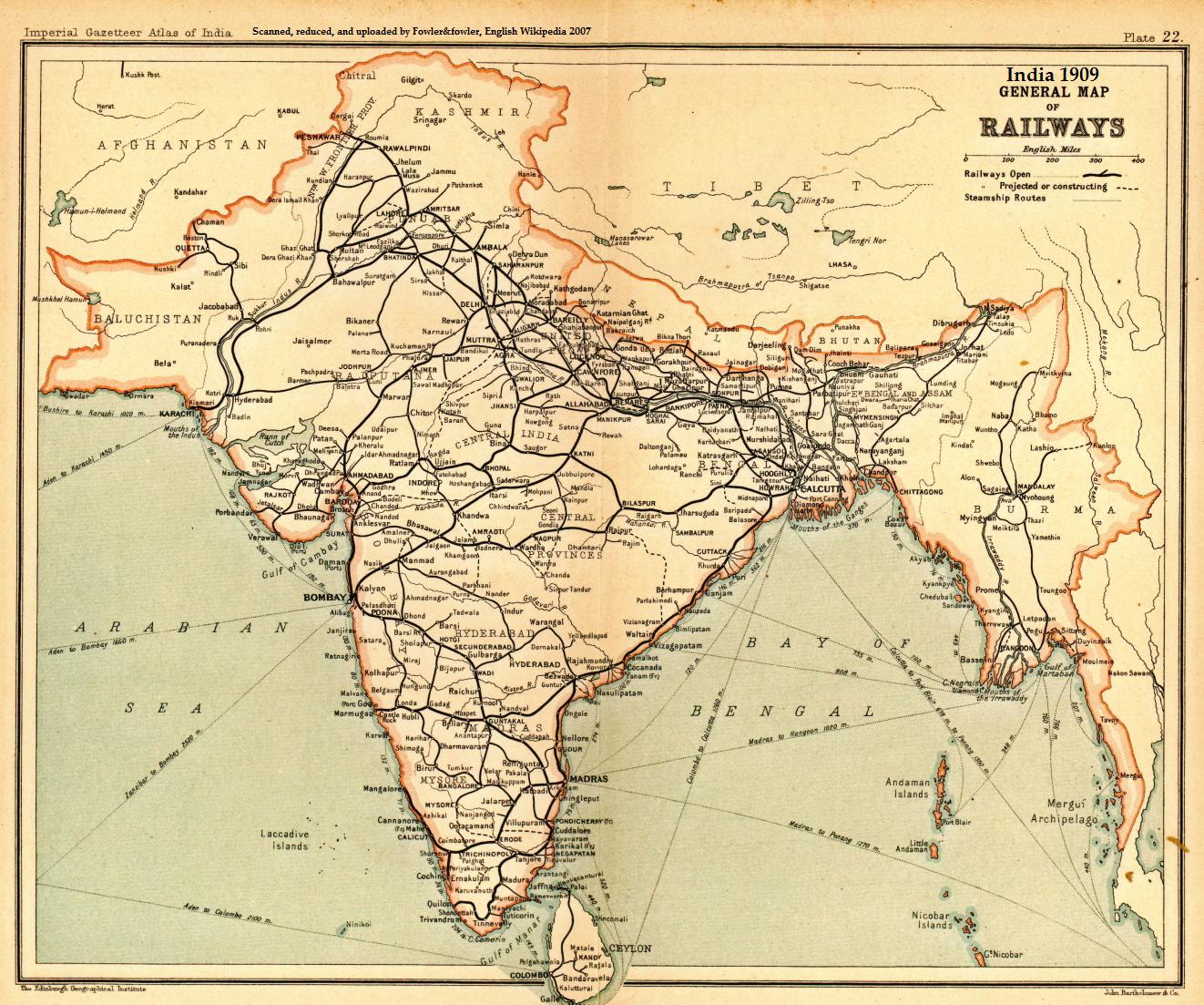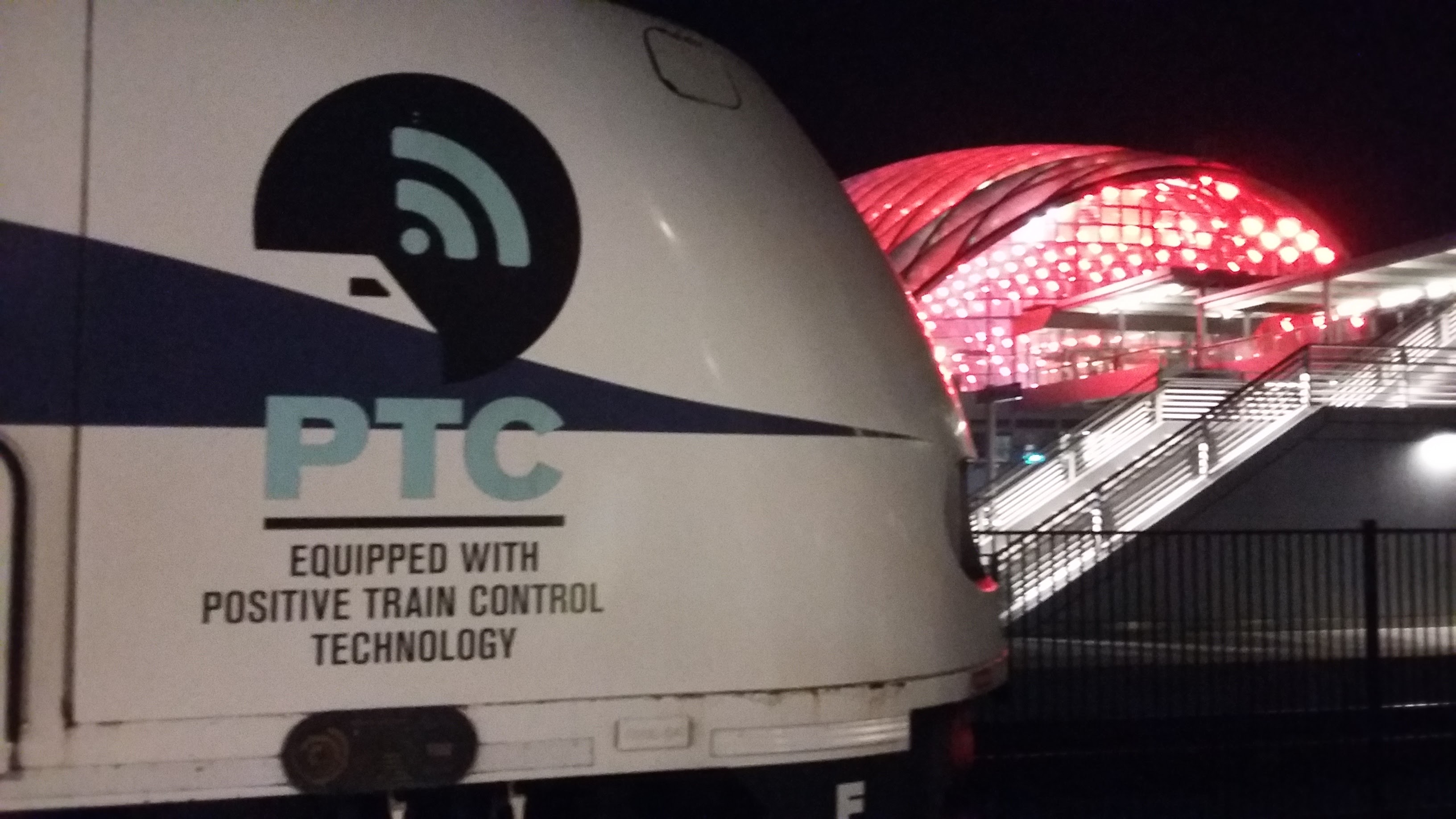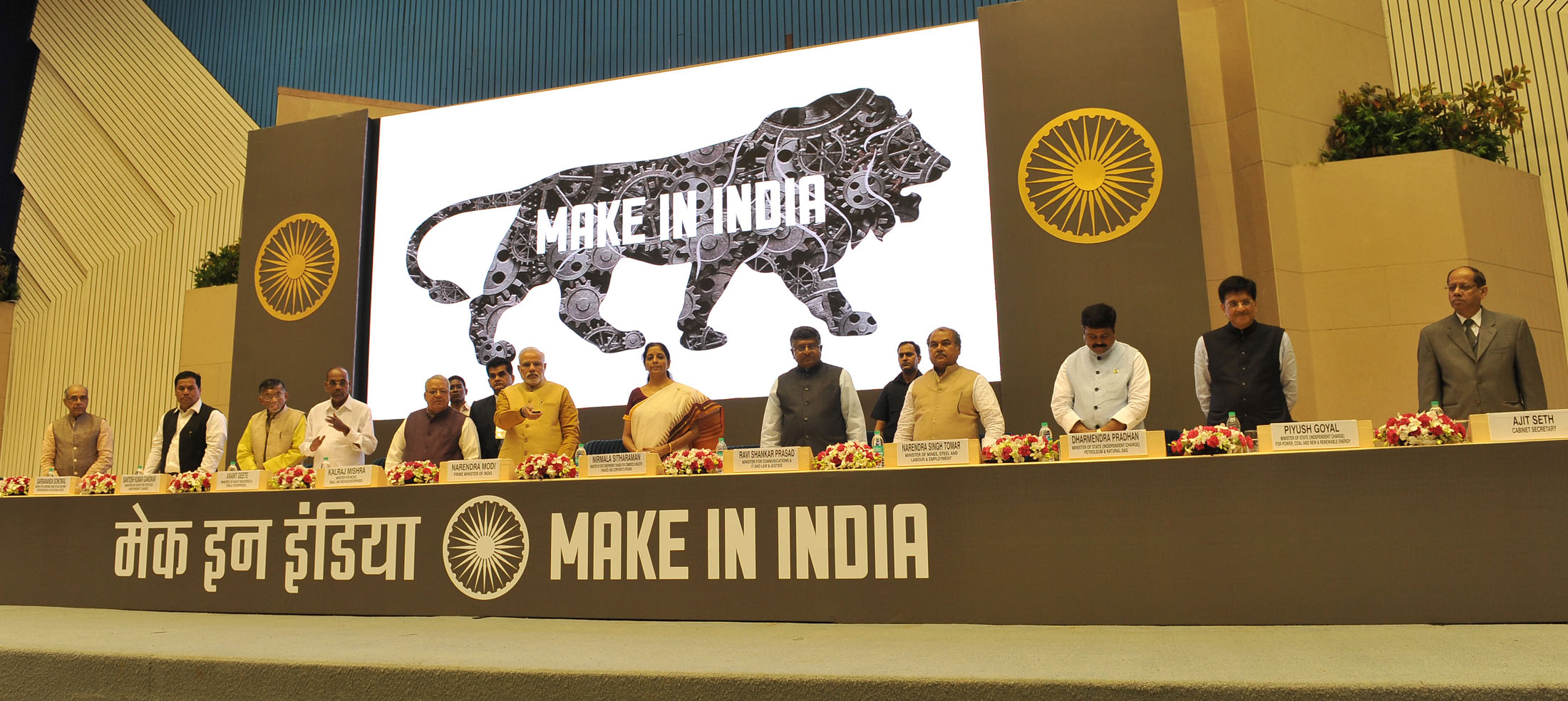|
Indian Locomotive Class WDG-4G
The Indian locomotive class WDG-4G (GE ES43ACmi) is a class of dual-cabin freight-hauling diesel-electric locomotive used by the Indian Railways (IR). The locomotive is designed by GE Transportation and is based on its Evolution Series, which are used in North America. The class is meant for freight hauling and replaces the older American Locomotive Company (ALCO)-designed locomotives, which have been the mainstay diesels of Indian Railways since 1962. Equipped with a 12-cylinder fully turbocharged GEVO engine, it is claimed to be 50% more environmentally friendly than its predecessors and is the first in the country to be compliant with level one of the emission norms set by the International Union of Railways (UIC-1). The locomotive has two cabs for easy reversal, both of which are air conditioned. The locomotive is part of a 13-year contract between Indian Railways and GE Transportation under which 700 such locomotives will be produced indigenously. Diesel Locomotive Fact ... [...More Info...] [...Related Items...] OR: [Wikipedia] [Google] [Baidu] |
GE Transportation
GE Transportation is a division of Wabtec. It was known as GE Rail and owned by General Electric until sold to Wabtec on February 25, 2019. The organization manufactures equipment for the railroad, marine, mining, drilling and energy generation industries. The company was founded in 1907. It is headquartered in Pittsburgh, Pennsylvania, while its main manufacturing facility is located in Erie, Pennsylvania. Locomotives are assembled at the Erie plant, while engine manufacturing takes place in Grove City, Pennsylvania. In May 2011, the company announced plans to build a second locomotive factory in Fort Worth, Texas, which opened in January 2013. Rail products GE Transportation is the largest producer of diesel-electric locomotives for both freight and passenger applications in North America, believed to hold up to a 70% market share. It also produces related products, such as railroad signaling equipment, and parts for locomotives and railroad cars, as well as providing rep ... [...More Info...] [...Related Items...] OR: [Wikipedia] [Google] [Baidu] |
Uttar Pradesh
Uttar Pradesh (; , 'Northern Province') is a state in northern India. With over 200 million inhabitants, it is the most populated state in India as well as the most populous country subdivision in the world. It was established in 1950 after India had become a republic. It was a successor to the United Provinces (UP) during the period of the Dominion of India (1947–1950), which in turn was a successor to the United Provinces (UP) established in 1935, and eventually of the United Provinces of Agra and Oudh established in 1902 during the British Raj. The state is divided into 18 divisions and 75 districts, with the state capital being Lucknow, and Prayagraj serving as the judicial capital. On 9 November 2000, a new state, Uttaranchal (now Uttarakhand), was created from Uttar Pradesh's western Himalayan hill region. The two major rivers of the state, the Ganges and its tributary Yamuna, meet at the Triveni Sangam in Prayagraj, a Hindu pilgrimage site. Ot ... [...More Info...] [...Related Items...] OR: [Wikipedia] [Google] [Baidu] |
Ministry Of Railways (India)
The Ministry of Railways is a ministry in the Government of India, responsible for the country's rail transport. The ministry operates the statutory body Indian Railways, an organisation that operates as a monopoly in rail transport and is headed by the Chairman and CEO of Railway Board. The Ministry of Railways along with the Railway Board is housed inside Rail Bhawan in New Delhi. Organisational structure The ministry has a Union Minister and Minister of State. A number of directorates report to the Railway Board. Most of the officers posted in Ministry of Railways are either from organised "Group A Railway services" or the Railway Board Secretariat Service. Indian Railways The statutory body known as the Indian Railways, which reports to parliament and is under the ownership of ''Ministry of Railways'' of the Government of India. The Indian Railway Board comprises one Chairman, seven "members of the Railway Board", and a Financial Commissioner (who is the represent ... [...More Info...] [...Related Items...] OR: [Wikipedia] [Google] [Baidu] |
Western Railway Zone
The Western Railway (abbreviated WR) is one of the 19 zones of Indian Railways and is among the busiest railway networks in India, headquartered at Mumbai, Maharashtra. The major railway routes of Indian Railways which come under Western Railways are: Mumbai Central–Ratlam, Mumbai Central–Ahmedabad and Palanpur–Ahmedabad. The railway system is divided into six operating divisions: , , , , , and . Vadodara railway station, being the junction point for the Ahmedabad–Mumbai route and the Mumbai–Ratlam route towards New Delhi, is the busiest junction station in Western Railways and one of the busiest junctions of Indian Railways too, while Ahmedabad Division earns highest revenue followed by Mumbai Division and Vadodara Division. Surat railway station is one of the busiest railway station in Western Railway in non-junction category where more than 180 trains pass per day. Western Railway General Manager's official bungalow 'Bombarci' (abbreviation of Bombay, Baroda and Ce ... [...More Info...] [...Related Items...] OR: [Wikipedia] [Google] [Baidu] |
Northern Railway Zone
The Northern Railway (NR) is one of the 19 Railway zones of India and the northernmost zone of the Indian Railways. It is headquartered at Baroda House in New Delhi. History Officially notified as a new railway zone on 14 April 1952, its origin goes back to 3 March 1859. On 14 April 1952, the Northern Railway zone was created by merging Jodhpur Railway, Bikaner Railway, Eastern Punjab Railway and three divisions of the East Indian Railway north-west of Mughalsarai (Uttar Pradesh). On 3 March 1859, Allahabad– Kanpur, the first passenger railway line in North India was opened, which falls under Northern Railway zone. In 1864, a broad-gauge track from Calcutta to Delhi was laid. In 1864, the railway line between Old Delhi and Meerut City railway station was constructed. Meerut Cantt railway station was established by British India government around 1865 after the sepoy mutiny of 1857. In 1866, through trains started running on the East Indian Railway Company's H ... [...More Info...] [...Related Items...] OR: [Wikipedia] [Google] [Baidu] |
Fault Detection And Isolation
Fault detection, isolation, and recovery (FDIR) is a subfield of control engineering which concerns itself with monitoring a system, identifying when a fault has occurred, and pinpointing the type of fault and its location. Two approaches can be distinguished: A direct pattern recognition of sensor readings that indicate a fault and an analysis of the discrepancy between the sensor readings and expected values, derived from some model. In the latter case, it is typical that a fault is said to be detected if the discrepancy or ''residual'' goes above a certain threshold. It is then the task of fault isolation to categorize the type of fault and its location in the machinery. Fault detection and isolation (FDI) techniques can be broadly classified into two categories. These include model-based FDI and signal processing based FDI. Model-based FDI In model-based FDI techniques some model of the system is used to decide about the occurrence of fault. The system model may be ma ... [...More Info...] [...Related Items...] OR: [Wikipedia] [Google] [Baidu] |
Positive Train Control
Positive train control (PTC) is a family of automatic train protection systems deployed in the United States. Most of the United States' national rail network mileage has a form of PTC. These systems are generally designed to check that trains are moving safely and to stop them when they are not. A simplistic form of train traffic governance is ''negative'' train control, where trains must stop when issued a stop order and can move in the absence of such. An example of negative train control is Indusi. In contrast, ''positive'' train control restricts the train movement to an explicit allowance; movement is halted upon invalidation. A train operating under PTC receives a ''movement authority'' containing information about its location and where it is allowed to safely travel. As of 2019, the U.S. freight rail industry trade organization AAR claimed that the nation's largest freight railroads were operating PTC across 83.2 percent of the required route miles. The American Railwa ... [...More Info...] [...Related Items...] OR: [Wikipedia] [Google] [Baidu] |
Make In India
Make in India is an initiative by the Government of India to create and encourage companies to develop, manufacture and assemble products made in India and incentivize dedicated investments into manufacturing. The policy approach was to create a conducive environment for investments, develop a modern and efficient infrastructure, and open up new sectors for foreign capital. The initiative targeted 25 economic sectors for job creation and skill enhancement, and aimed "to transform India into a global design and manufacturing export hub." "Make in India" had three stated objectives: # to increase the manufacturing sector's growth rate to 12-14% per annum; # to create 100 million additional manufacturing jobs in the economy by 2022; # to ensure that the manufacturing sector's contribution to GDP is increased to 25% by 2022 (later revised to 2025). After the launch, India gave investment commitments worth and investment inquiries worth of between September 2014 to February 201 ... [...More Info...] [...Related Items...] OR: [Wikipedia] [Google] [Baidu] |
International Union Of Railways
The International Union of Railways (UIC, french: Union internationale des wikt:chemin de fer, chemins de fer) is an international rail transport industry body. History The railways of Europe originated as many separate concerns, and there were many border changes after World War I and the Treaty of Versailles. Colonial railways were the responsibility of the mother country. Into this environment the UIC was created on 17 October 1922, with the aim of standardising industry practices. Ticket revenue sharing was originally undertaken with the UIC Franc currency equivalent. UIC classification and UIC Country Codes allowed precise determination of rolling stock capabilities and ownership, with wagons assigned unique UIC wagon numbers. The 1990s GSM-R radio telecommunication system is an international interoperability specification covering voice and signalling systems for railway communications whose specification is maintained by the International Union of Railways project Euro ... [...More Info...] [...Related Items...] OR: [Wikipedia] [Google] [Baidu] |
Turbo-diesel
The term turbo-diesel, also written as turbodiesel and turbo diesel, refers to any diesel engine equipped with a turbocharger. As with other engine types, turbocharging a diesel engine can significantly increase its efficiency and power output, especially when used in combination with an intercooler. Turbocharging of diesel engines began in the 1920s with large marine and stationary engines. Trucks became available with turbo-diesel engines in the mid-1950s, followed by passenger cars in the late 1970s. Since the 1990s, the compression ratio of turbo-diesel engines has been dropping. Principle Diesel engines are typically well suited to turbocharging due to two factors: * A "lean" air–fuel ratio, caused when the turbocharger supplies excess air into the engine, is not a problem for diesel engines, because the torque control is dependent on the mass of fuel that is injected into the combustion chamber (i.e. air-fuel ratio), rather than the quantity of the air-fuel mixture. * ... [...More Info...] [...Related Items...] OR: [Wikipedia] [Google] [Baidu] |
American Locomotive Company
The American Locomotive Company (often shortened to ALCO, ALCo or Alco) was an American manufacturer of locomotives, diesel generators, steel, and tanks that operated from 1901 to 1969. The company was formed by the merger of seven smaller locomotive manufacturers and Schenectady Locomotive Works, Schenectady Locomotive Engine Manufactory of Schenectady, New York. A subsidiary, American Locomotive Automobile Company, designed and manufactured automobiles under the Alco brand from 1905 to 1913. ALCO also produced nuclear reactors from 1954 to 1962. The company changed its name to Alco Products, Incorporated in 1955. In 1964, the Worthington Corporation acquired the company. The company went out of business in 1969. The ALCO name is currently being used by Fairbanks-Morse, Fairbanks Morse Engine for their FM, ALCO line. Foundation and early history The company was created in 1901 from the merger of seven smaller locomotive manufacturers with Schenectady Locomotive Works, Schenect ... [...More Info...] [...Related Items...] OR: [Wikipedia] [Google] [Baidu] |
North America
North America is a continent in the Northern Hemisphere and almost entirely within the Western Hemisphere. It is bordered to the north by the Arctic Ocean, to the east by the Atlantic Ocean, to the southeast by South America and the Caribbean Sea, and to the west and south by the Pacific Ocean. Because it is on the North American Plate, North American Tectonic Plate, Greenland is included as a part of North America geographically. North America covers an area of about , about 16.5% of Earth's land area and about 4.8% of its total surface. North America is the third-largest continent by area, following Asia and Africa, and the list of continents and continental subregions by population, fourth by population after Asia, Africa, and Europe. In 2013, its population was estimated at nearly 579 million people in List of sovereign states and dependent territories in North America, 23 independent states, or about 7.5% of the world's population. In Americas (terminology)#Human ge ... [...More Info...] [...Related Items...] OR: [Wikipedia] [Google] [Baidu] |








.jpg)